Are you ready to embark on a noodle journey that’s rich in flavor and texture? Look no further. In this blog post, I’ll be your guide to mastering the art of Mazesoba. Get ready to create a bowl of irresistible goodness right in your own kitchen.
Mazesoba Recipes
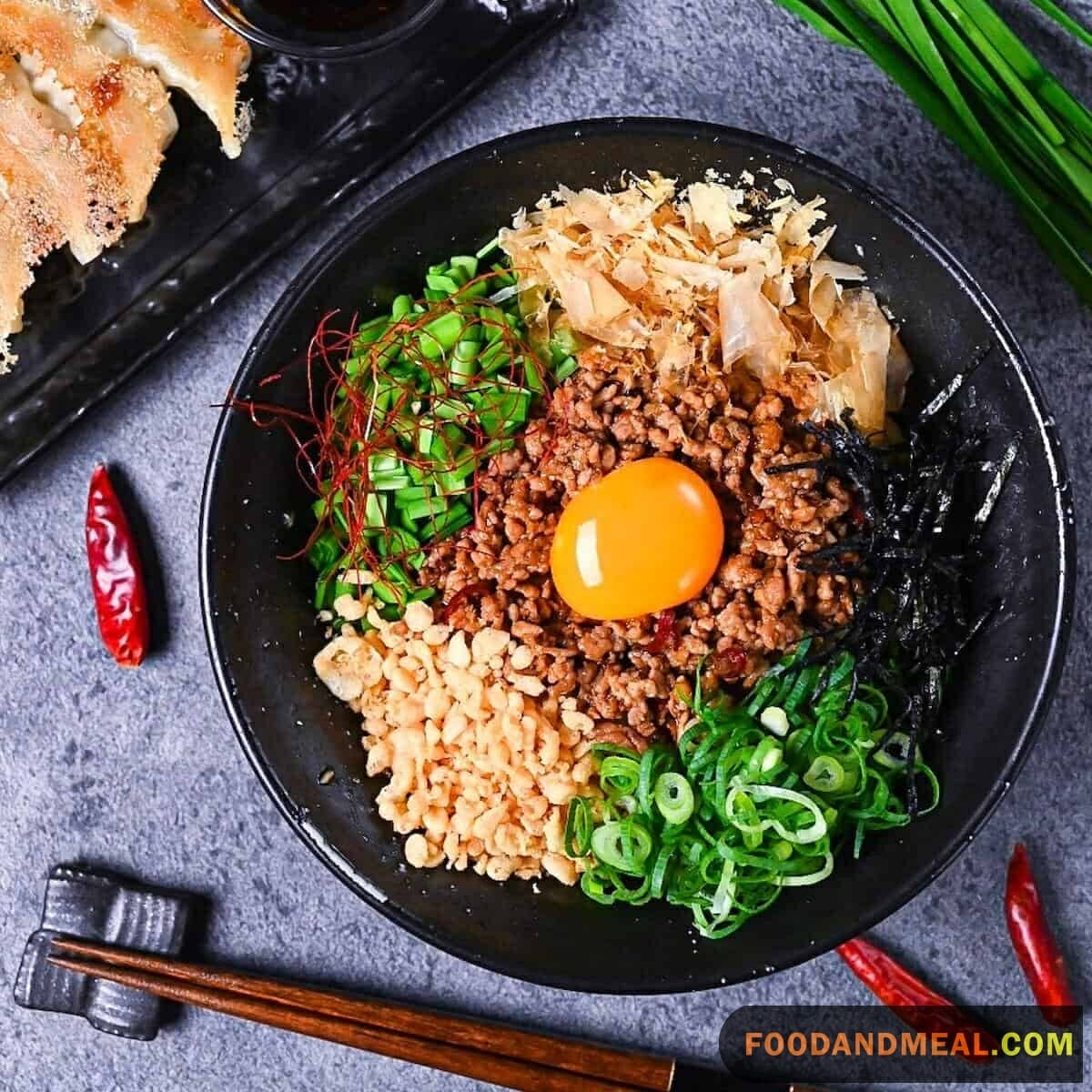

Japanese Mazesoba
Equipment
Ingredients
- 2 cups Niku Soboro
- ½ cup sesame oil
- ½ cup Shoyu Tare
- 2 pounds noodles fresh , such as thick Takasuimen
- chives Chopped fresh
- Negi
- Shredded nori
- Katsuobushi bonito flakes
Instructions
- In a large mixing bowl, combine the niku soboro, sesame oil, and tare.

- With all your ingredients ready to go, bring a large pot of water to a boil over medium-high heat. Cook the noodles. Ramen that has been cut to a standard thickness (about 1 mm) will cook in 1 to 2 minutes.

- Drain the noodles, taking care to shake off as much excess water as you can. Carefully place some noodles in each ramen bowl. Add the niku-soboro mixture and toss to mix.

- Top with a sprinkle of chives, negi, nori, and bonito flakes.

- Mix well before eating.
Notes
Nutrition
© Food And Meal
This website provides approximate nutrition information for convenience and as a courtesy only. Nutrition data is gathered primarily from the Spoonacular Database, whenever available, or otherwise other online calculators.
Alternative Method: Mazesoba – Stovetop Edition
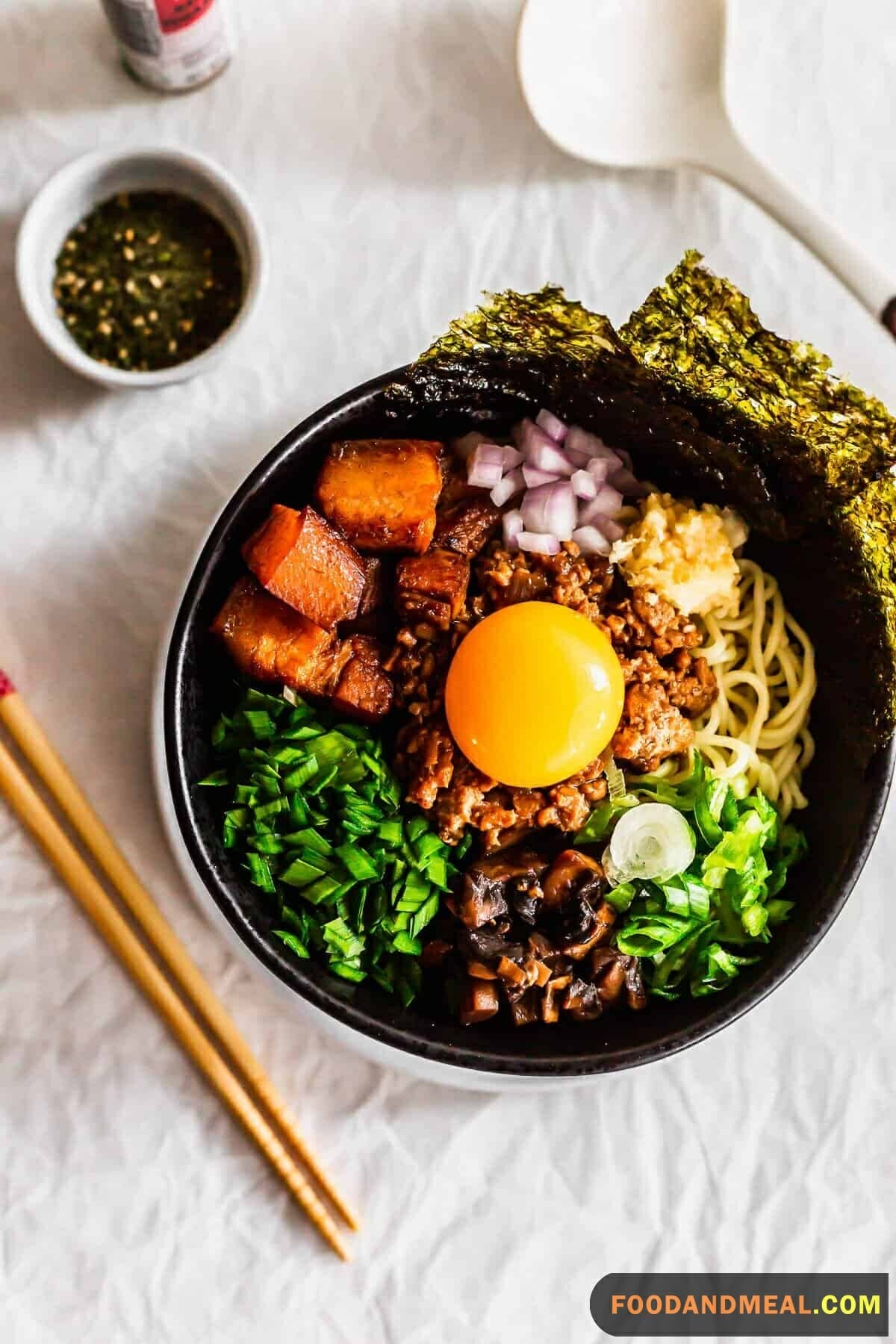
Ingredients:
- 8 ounces of thick, chewy noodles (ramen or udon)
- 1/2 pound ground pork
- 2 cloves garlic, minced
- 2 tablespoons vegetable oil
- 1/4 cup soy sauce
- 2 tablespoons oyster sauce
- 2 tablespoons sake (Japanese rice wine)
- 1 tablespoon sugar
- 1/2 teaspoon chili oil (adjust to your spice preference)
- 2 green onions, chopped
- 2 sheets of nori seaweed, cut into thin strips
- 2 soft-boiled eggs, halved
- Bamboo shoots, for garnish (optional)
- Toasted sesame seeds, for garnish (optional)
Instructions:
- Cook the Noodles:
- Bring a large pot of water to a boil. Add the noodles and cook according to the package instructions until they are al dente. Drain the noodles and set them aside.
- Prepare the Sauce:
- In a small bowl, combine the soy sauce, oyster sauce, sake, sugar, and chili oil. Mix well to create your Mazesoba sauce.
- Sauté the Pork:
- In a large skillet or frying pan, heat the vegetable oil over medium-high heat. Add the minced garlic and ground pork. Cook, breaking up the pork with a spatula, until it’s browned and cooked through.
- Combine Noodles and Sauce:
- Reduce the heat to medium-low. Add the cooked noodles to the skillet with the cooked pork. Pour the Mazesoba sauce over the noodles.
- Toss and Sauté:
- Using tongs or chopsticks, toss the noodles and sauce together until the noodles are well coated. Sauté for a few minutes to heat everything through.
- Serve Hot:
- Divide the Mazesoba among serving bowls. Top each bowl with green onions, nori seaweed strips, half a soft-boiled egg, bamboo shoots (if desired), and a sprinkle of toasted sesame seeds.
- Enjoy:
- Serve your homemade Mazesoba immediately while it’s hot and flavorful. Mix everything together before digging in, and savor the deliciousness.
Tips for making Mazesoba
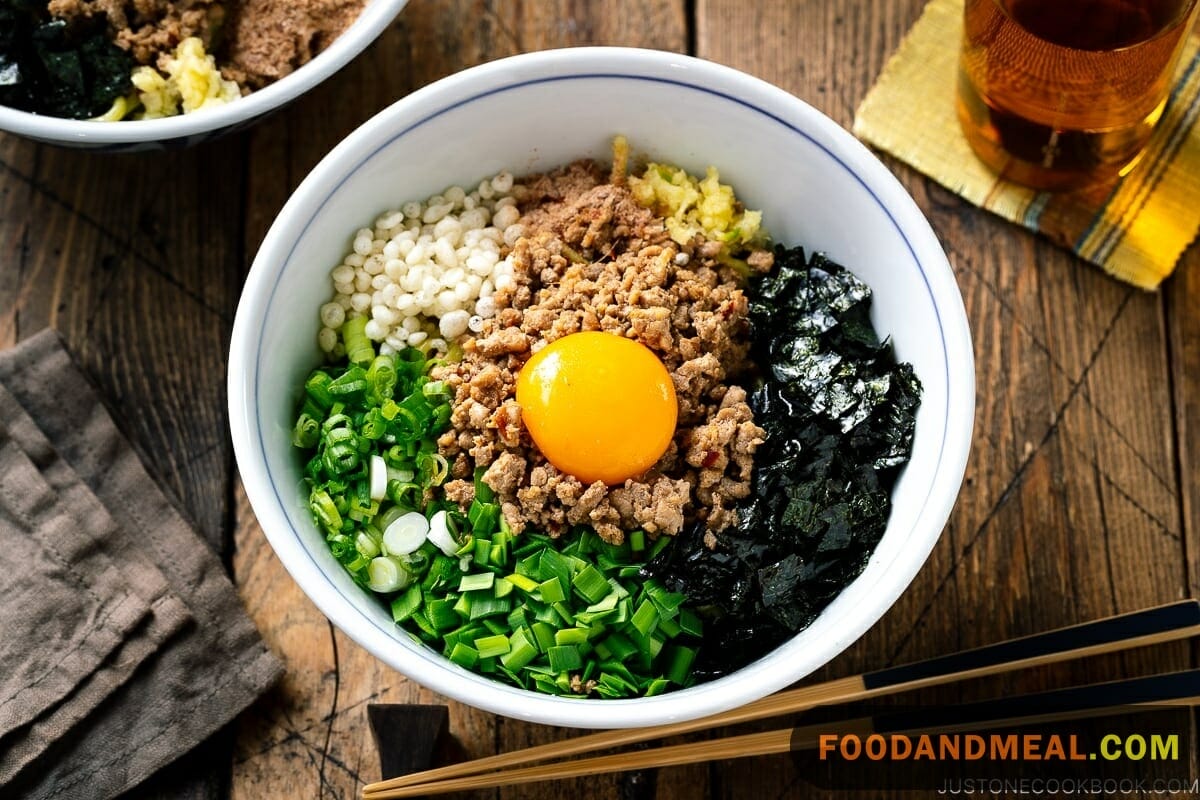
Serving Suggestions
- Side of Pickled Vegetables: Balance the richness of Mazesoba with a side of pickled vegetables, such as Japanese tsukemono. The tangy, crisp flavors provide a delightful contrast.
- Miso Soup: Serve a bowl of comforting miso soup alongside your Mazesoba. The umami-rich broth complements the noodle dish beautifully.
- Japanese Gyoza: Create a complete Japanese dining experience by pairing your Mazesoba with crispy, pan-fried gyoza (dumplings). Dip them in soy sauce for an extra treat.
- Fresh Edamame: Steamed edamame sprinkled with sea salt makes for a healthy and tasty side dish that complements the flavors of Mazesoba.
- Green Tea or Ramune: For beverages, consider a hot cup of green tea or the fun and fizzy Japanese soda called Ramune to wash down your meal.
Cooking Tips
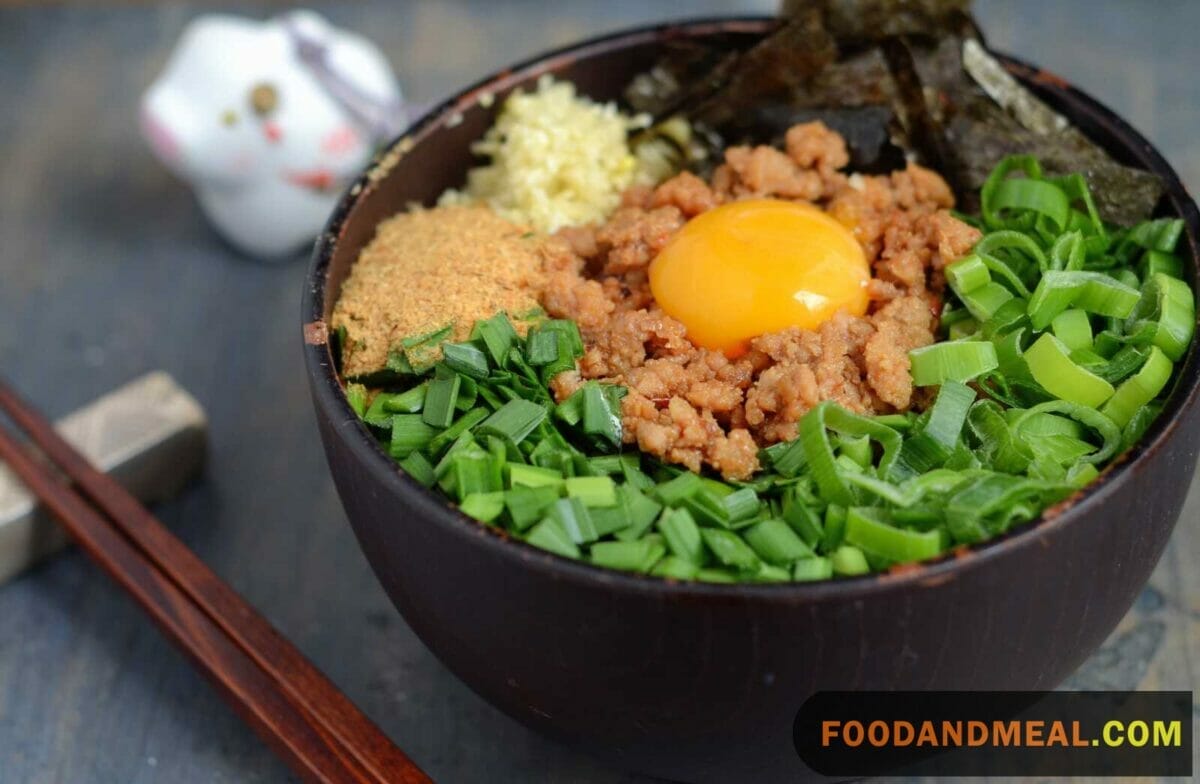
- Don’t Overcook the Noodles: Cook your noodles just until they’re al dente. Overcooking can result in a mushy texture. Rinse them with cold water after draining to stop the cooking process.
- Customize Your Toppings: Get creative with your toppings. While traditional Mazesoba includes ground pork, feel free to substitute it with other proteins like ground chicken or tofu for a unique twist.
- Adjust the Spice Level: Control the spiciness by adjusting the amount of chili oil to suit your preference. Start with a small amount and add more if you like it hotter.
- Mix Thoroughly: Ensure each bite is packed with flavor by mixing the noodles, sauce, and toppings thoroughly. The key to Mazesoba is the perfect blend.
- Soft-Boiled Egg Perfection: To achieve the ideal soft-boiled egg, simmer it for exactly 6 minutes and then immediately transfer it to an ice water bath to stop the cooking.
FAQs about Mazesoba
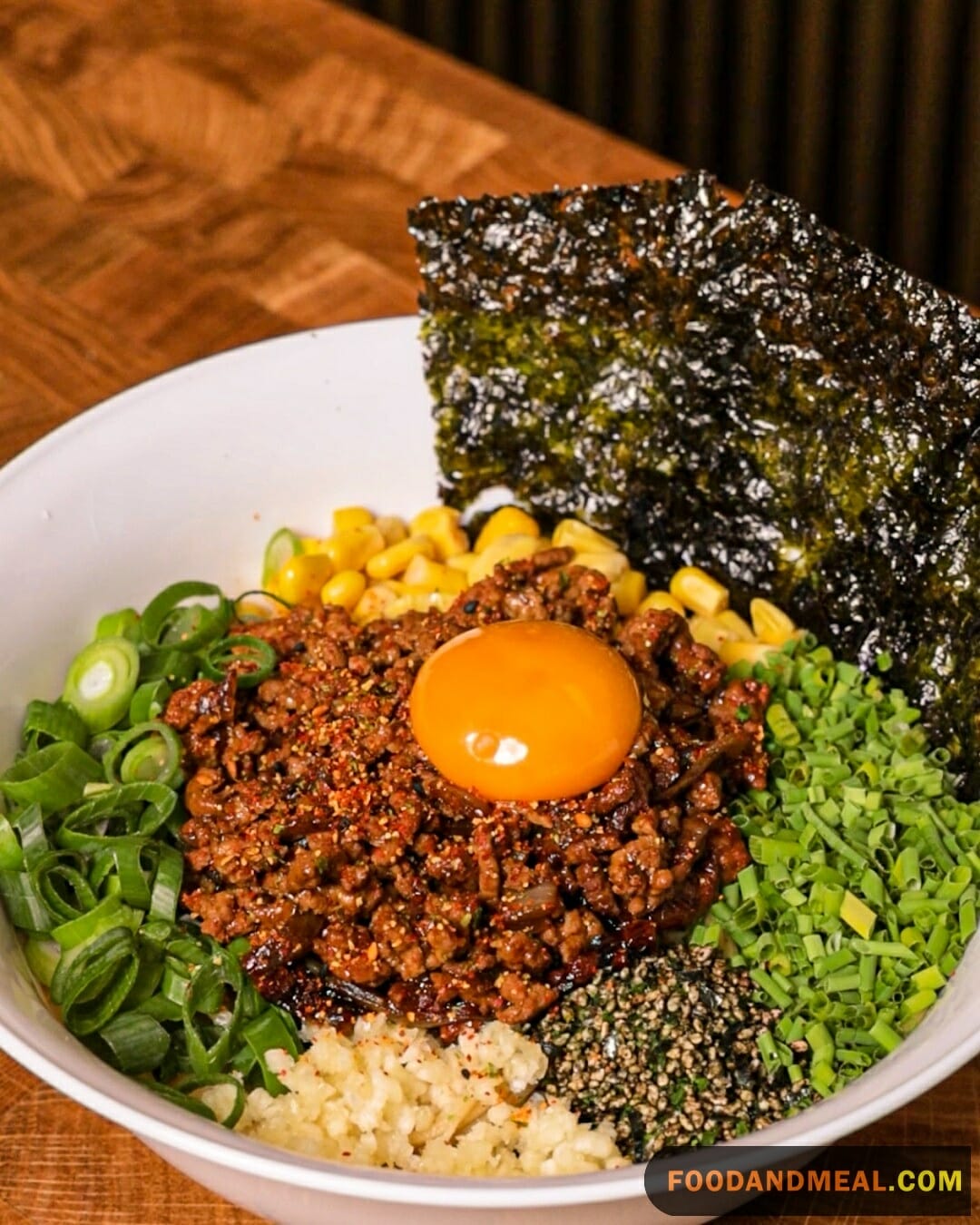
- Can I make Mazesoba vegetarian or vegan? Absolutely! Substitute the ground pork with plant-based protein or tofu, and ensure your noodles and sauces are vegan-friendly.
- Can I prepare Mazesoba in advance? While it’s best enjoyed fresh, you can prepare components like the sauce and toppings ahead of time for a quicker assembly.
- How do I store leftover Mazesoba? Store any leftover Mazesoba in an airtight container in the refrigerator. Reheat gently in a skillet or microwave, adding a splash of water if needed to revive the noodles.
- What if I can’t find certain toppings? Mazesoba is versatile. If you can’t find specific toppings, feel free to substitute with your favorite ingredients or whatever you have on hand.
- Can I use other types of noodles? While ramen or udon noodles are traditional, you can experiment with other types like soba or even spaghetti if needed. Just adjust the cooking time accordingly.
Master the art of crafting Mazesoba at home and savor a Japanese culinary triumph. Join our culinary community, share the recipe, and subscribe for more epicurean adventures.
I'm James F Anderson, a noted sous chef from London and a Le Cordon Bleu alumnus. My career began in a Michelin-starred Parisian eatery, where my blend of classic and contemporary cooking, using seasonal ingredients, earned accolades. Recognized in culinary publications and on cooking shows, I’m committed to mentoring aspiring chefs and delivering memorable dining experiences, marking me as a standout talent in the culinary world.






